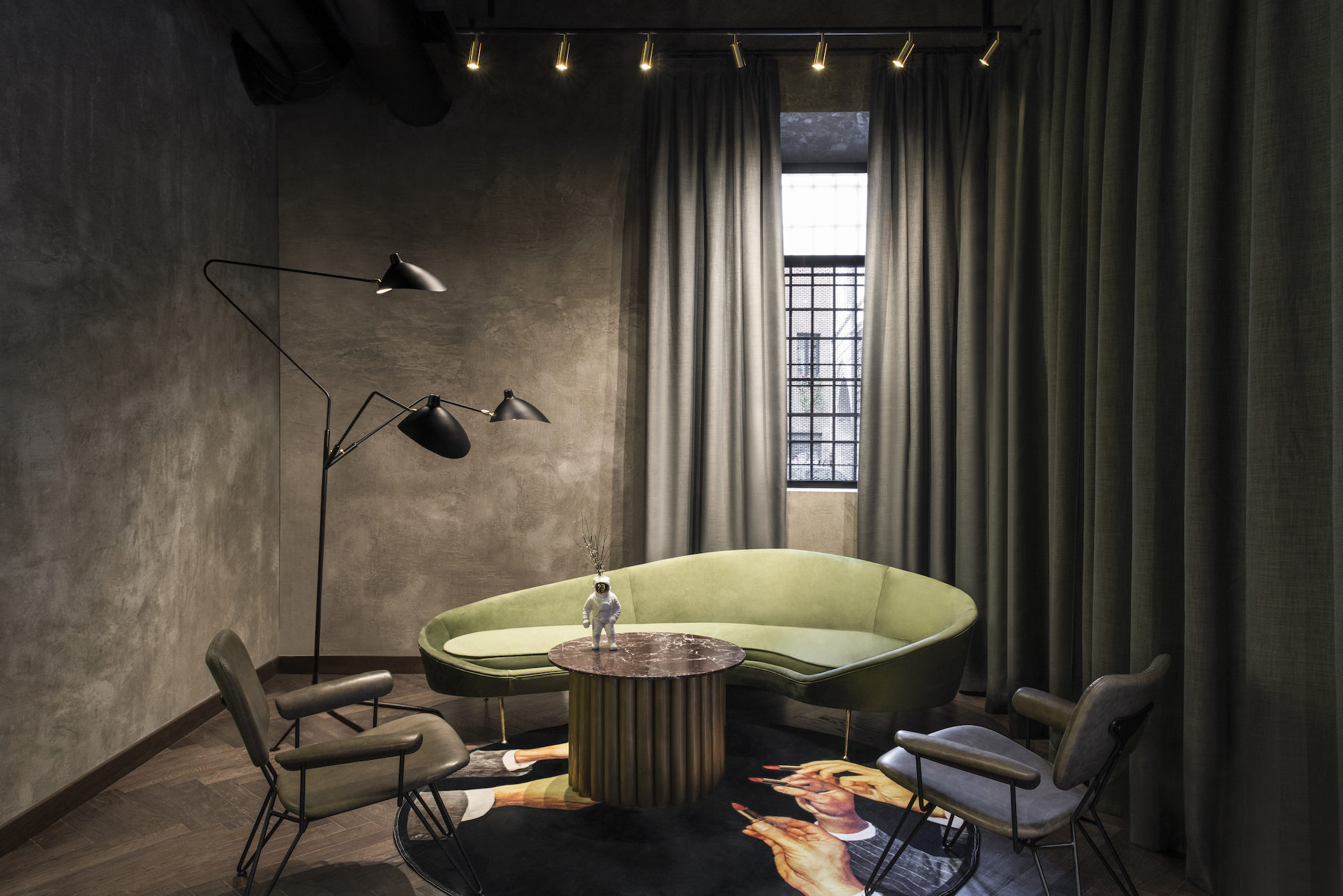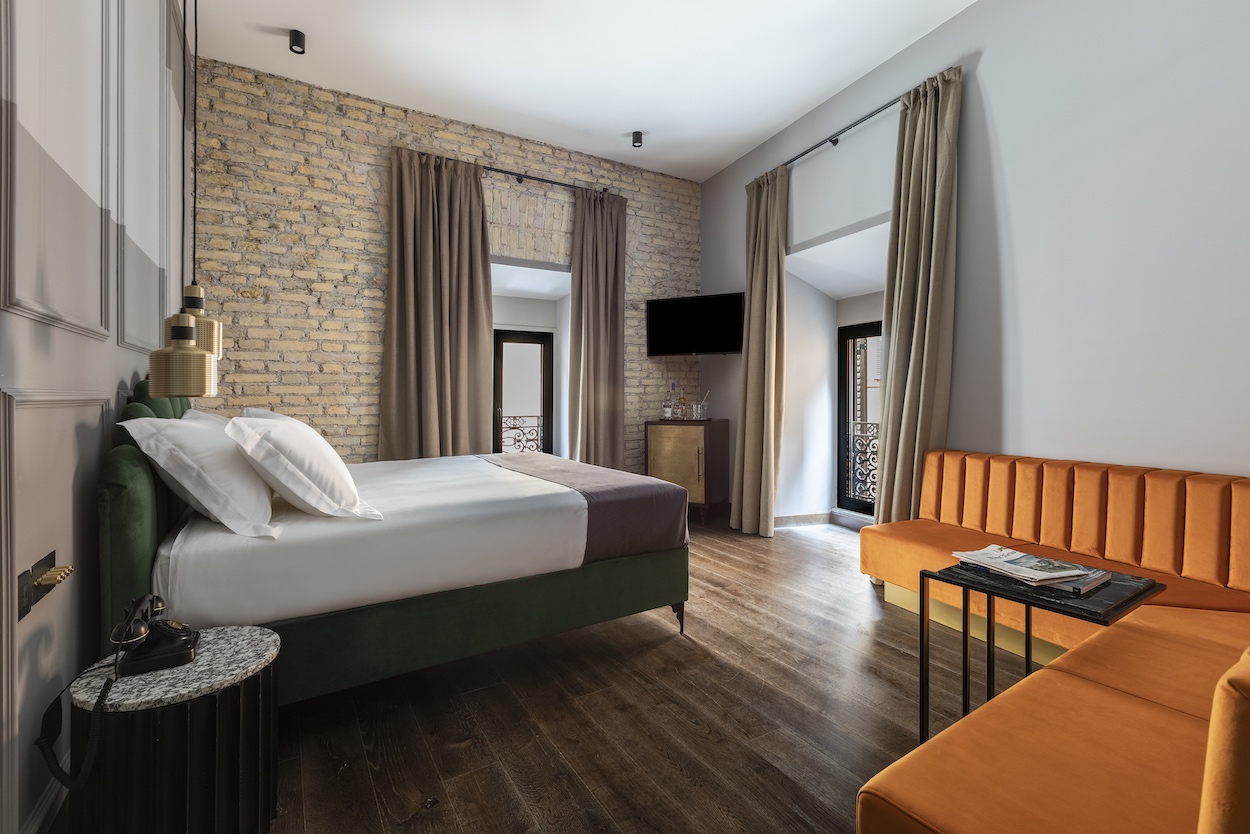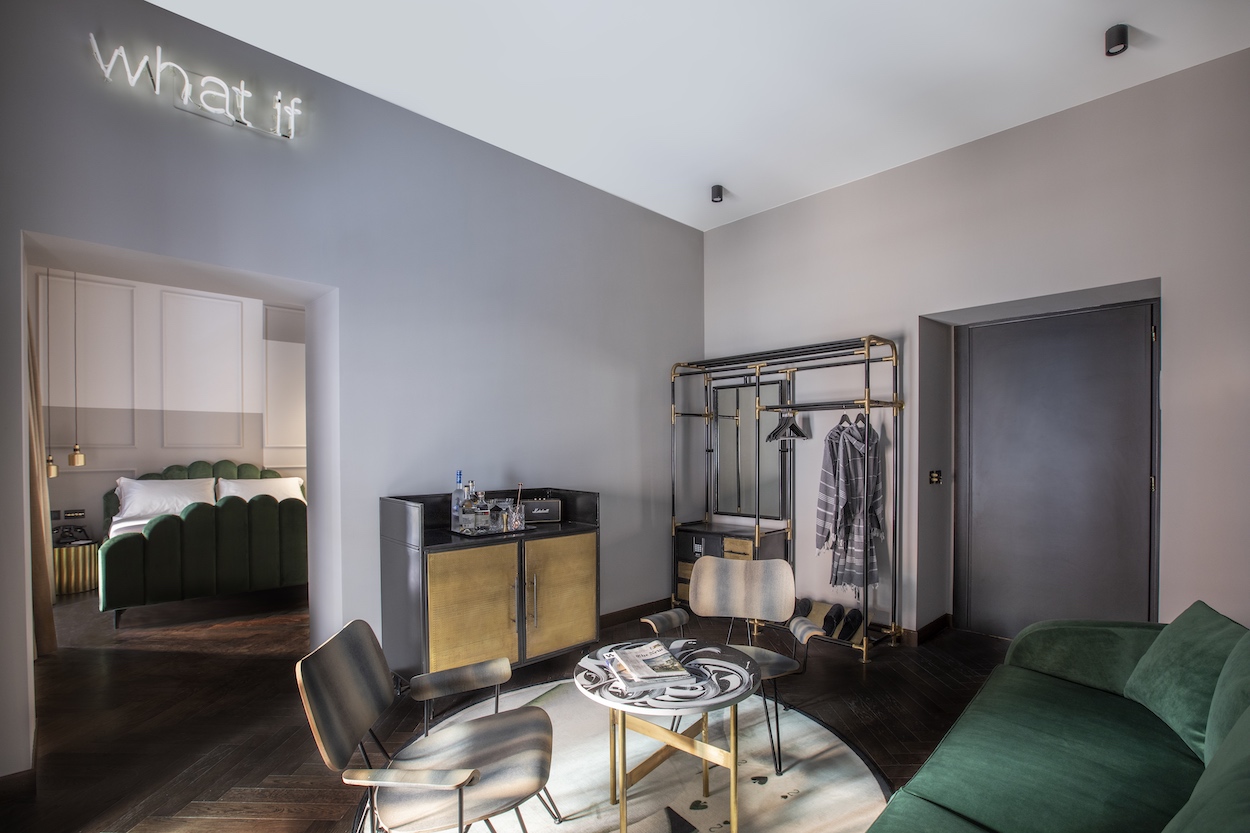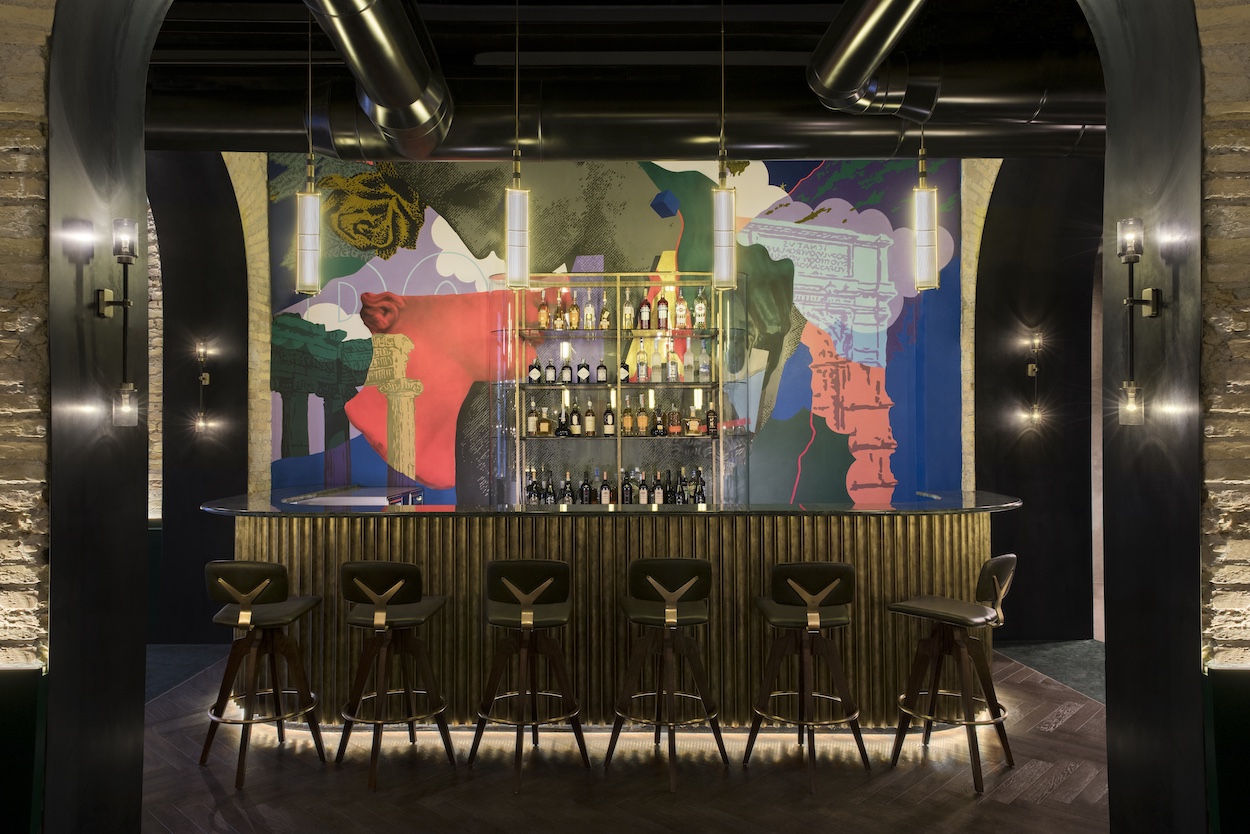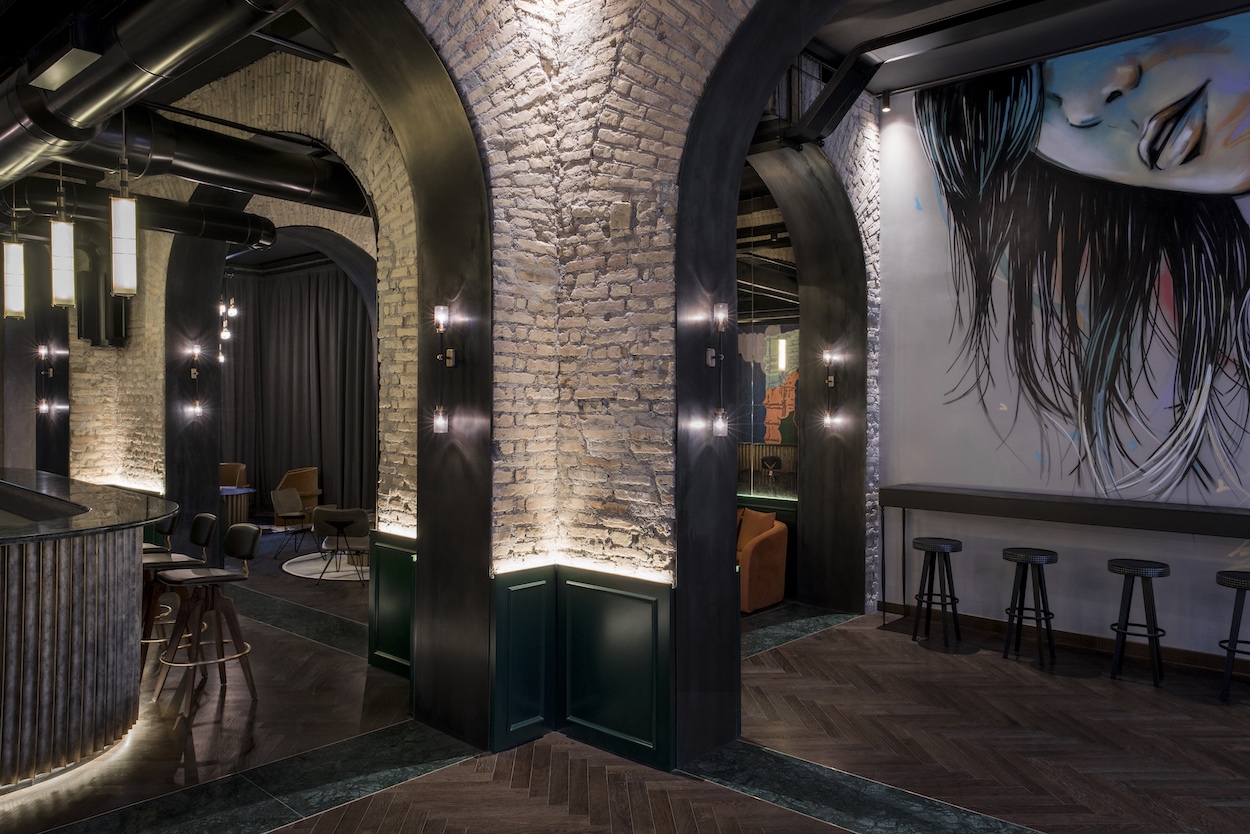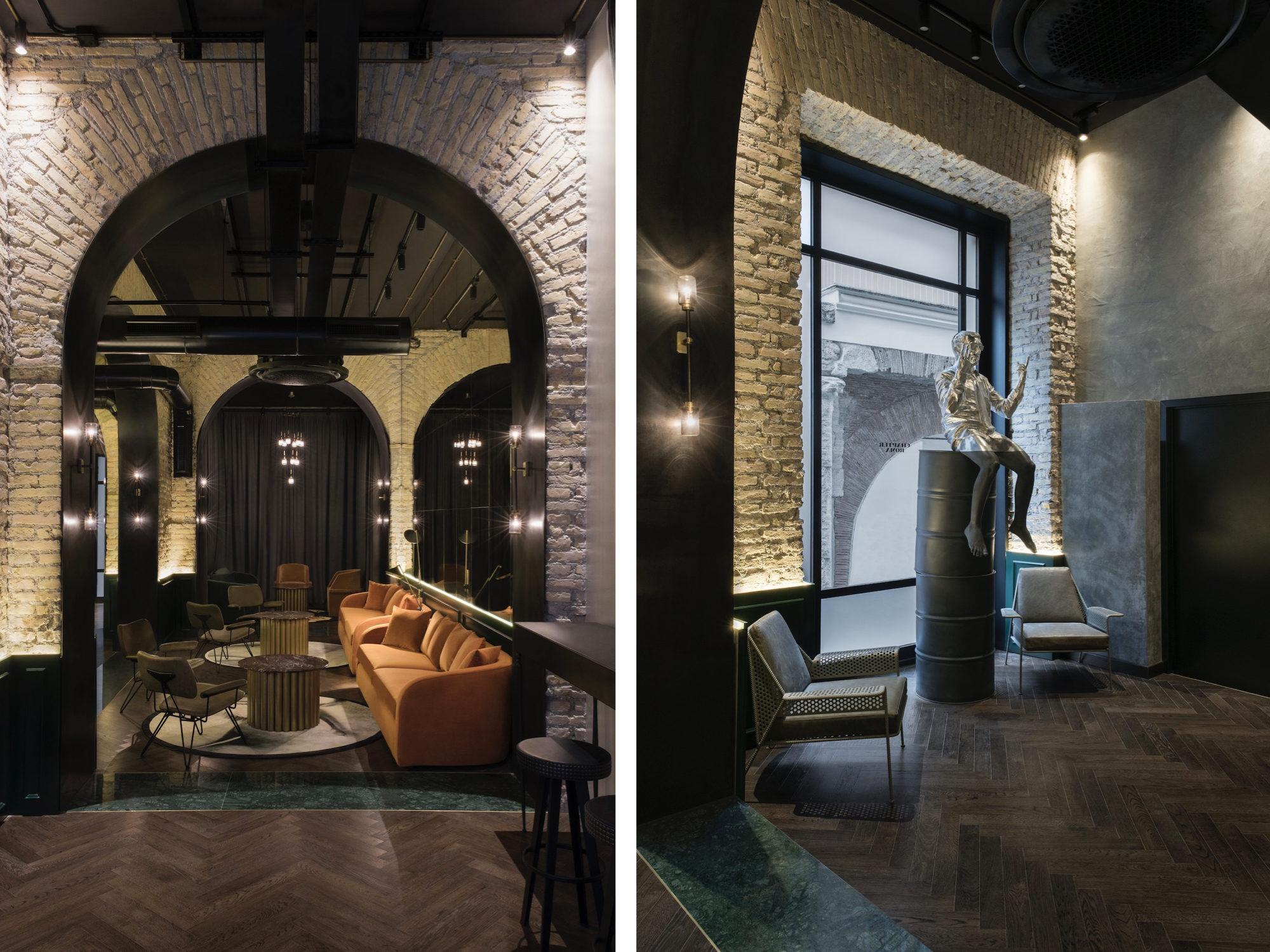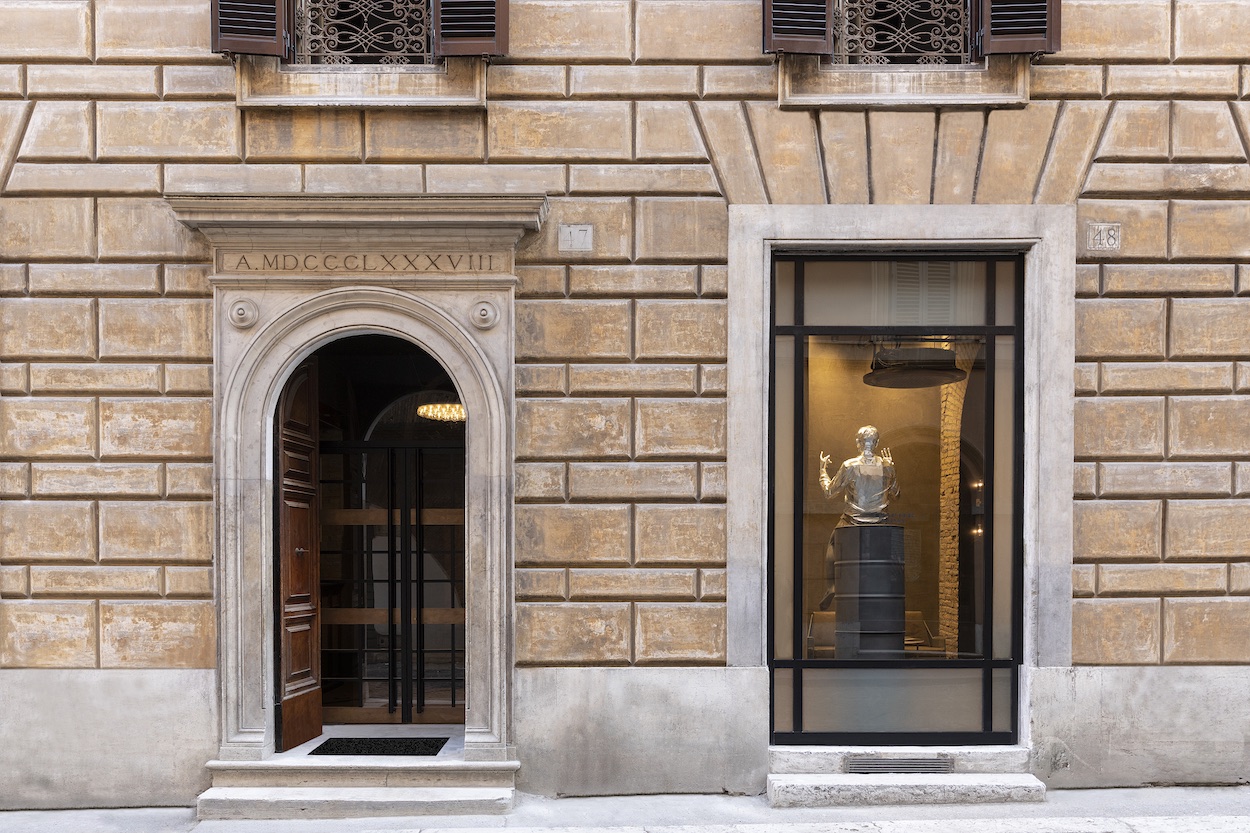Sequestered from the rapid and relentless change that grips the rest of the modern world, Rome evolves at a plodding pace. There, time is measured in eras, not years. The Eternal City is, well, eternally the same, like a classic Battistoni suit you pull out of the wardrobe for special occasions. It’s always just as you left it. But eventually change proves unavoidable, even in Italy.
Unlike other global cosmopolitan cities, the hotel-as-social-hub concept hasn’t found footing in Rome. Until now. Both The Edition and Soho House are on their way, but the new Chapter Roma gets bragging rights as the first in. “We wanted to build something that is accessible to people in creative fields. Something younger and a little more original,” says founder Marco Cilia, a native Roman who returned home after cutting his teeth in the New York hospitality world to launch the project. “There’s not much like it in Italy, maybe a little bit in Milan.”
Housed in a late-1800s neoclassical pile in the historic and gallery–filled Regola neighborhood, also known as the Jewish Ghetto, the property is a bridge between past and present. Interior materials, such as copper, brass, and steel, reflect the area’s blacksmithing heritage, recasting the building as a canvas for contemporary touches that imbue it with a newfound energy. “We set out to strip away the layers of time and expose the bones of this historic building to use as our foundation to inform the general aesthetic and feel,” says the South African designer Tristan Du Plessis. “We added layers of plush velvets and French oak floors to contrast the industrial elements and inject warmth and a subdued glamour into the hotel.”
The interplay is especially enunciated in the 42 rooms where vibrant-hued furnishings and side tables emblazoned with calligraphy by longtime Fendi collaborator Warios coexist with deconstructed metal closet systems and “rock-and-roll” fixtures by British brands Bert Frank and Tom Dixon. Clashy? A bit. But there’s a surprising cohesiveness to everything. (The well-edited choice of amenities, including bath products by Swedish brand L:a Bruket and the Spain–produced Torres black truffle chips alone are telltale signs of the high taste level.) “This was achieved through informed design instead of theme,” Du Plessis says. “We engaged local artists and makers to collaborate with, as well as using knowledge of local historical design and architecture.”
One such engagement with artist Alice Pasquini gave rise to Chapter Roma’s signature moment, a large-scale graffiti mural of a woman seemingly peeking into the lounge. The space functions as the property’s beating heart and is where Cilia will try to lure Romans who aren’t used to hanging out at hometown hotels. A forthcoming organic market and juice bar, along with a yet-to-be-announced restaurant, will bolster the effort. Cilia is tight-lipped about the style of food but promises it will eschew the city’s pasta and sushi tropes for something unique. If true, it should fit right in.
